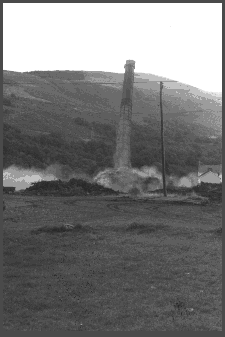
Upper Swansea Valley
The Story of Iron 7
by Len Ley
The site was again adapted for a new use when the Welsh Tin Plate Company took control. By 1889 tin plate production was under the control of David Thomas and Company which had erected three mills on the site to take advantage of a tin plate boom at that time. In March 1891 the Gough estate leased the works to R.G. Thomas for a ground rent of £60 per annum. In July of that year the Mckinnley Tariff was introduced to protect the tin plate industry of the USA. As that country had been a major customer, the Tariff soon became the harbinger of doom for much of the South Wales industry. Production dropped and works closed, including Ynyscedwyn which closed in 1903.
The tinworks at
Ynyscedwyn next to the
arches of the unfinished
iron works
Photograph from
the collections
of the late
John Morris

Photographs from the
collection of the late
John Morris


Perhaps the largest symbol of the industrial prowess on the site was the Iron Works great chimney stack. Local historian John Morris caught the final moments of this great edifice when it was demolished (above).
© Len Ley
There are7 pages on The Story of Iron. Use the box links below to view other pages.